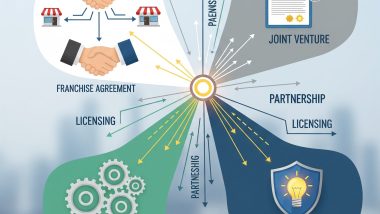In the realm of modern transportation, few companies have managed to revolutionize the industry as profoundly as Uber. What started as a small startup in 2009 has grown into a global behemoth, altering how we think about getting from point A to point B. The Uber case study serves as a captivating tale of innovation, disruption, challenges, and opportunities that have reshaped urban mobility and ignited conversations on various fronts.
The Genesis of a Game-Changer: Birth of Uber
The story of Uber began with Travis Kalanick and Garrett Camp, two entrepreneurs who sought a more efficient and convenient way to hail taxis. Their frustration with the traditional taxi industry's shortcomings laid the foundation for Uber's disruptive concept. With the tap of a smartphone screen, users could summon a ride driven by an independent contractor, using their vehicles, at a competitive price. This seamless blend of technology and transportation marked the inception of the ridesharing era.
Disruptive Innovation Takes Flight
Uber's ascent to dominance was meteoric, largely attributed to its innovative business model. By circumventing the need for extensive fleet ownership, Uber reduced overhead costs significantly. This, coupled with a real-time pricing mechanism based on supply and demand, created an appealing value proposition for both riders and drivers. As Uber rapidly expanded into new markets, it encountered resistance from traditional taxi services and regulatory bodies, setting the stage for legal battles and debates about the gig economy.
Challenges and Controversies
Uber's rapid growth was accompanied by a trail of controversies. Critics raised concerns about driver working conditions, passenger safety, and the potential implications for the broader transportation ecosystem. The company faced backlash for inadequate background checks, surge pricing during high-demand periods, and a lack of accessibility for disabled passengers. Regulatory challenges also emerged as local governments grappled with categorizing and regulating this innovative business model.
Innovating Beyond Ridesharing
Uber's innovative spirit extended beyond ridesharing. The company ventured into various other realms, such as food delivery (Uber Eats), autonomous vehicles, and even urban air mobility (Uber Air). The pursuit of self-driving cars led to partnerships and research initiatives, but it also faced setbacks after a fatal accident involving an autonomous vehicle during testing.
The Path Forward: Adaptation and Evolution
In response to criticism and challenges, Uber underwent significant changes. It began investing in safety measures, enhanced background checks, and initiatives to improve the driver experience. The company also worked on diversifying its offerings, incorporating electric and hybrid vehicles to address environmental concerns.
Lessons Learned and Future Prospects
The Uber case study offers several lessons for businesses and industries seeking to disrupt traditional models:
- Embrace Innovation:
Uber's success hinged on its ability to leverage technology to solve real-world problems, and this approach can be applied across sectors.
- Anticipate Regulatory Challenges:
Innovators must be prepared to navigate regulatory hurdles and work with stakeholders to find common ground.
- Prioritize Safety and Ethics:
Balancing innovation with passenger and worker safety is paramount. Addressing concerns head-on can help build trust.
- Adapt and Diversify:
Markets evolve, and successful companies must be ready to pivot and diversify their offerings to stay relevant.
As Uber continues to evolve and adapt, its journey serves as a testament to the transformative power of technology and entrepreneurship. The case study of Uber underscores the potential for even the most entrenched industries to undergo radical shifts, with innovative ideas and perseverance at the helm.




















